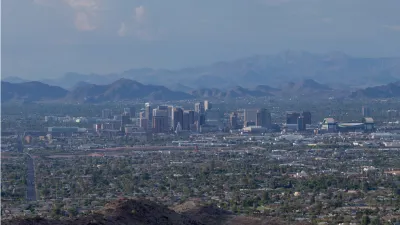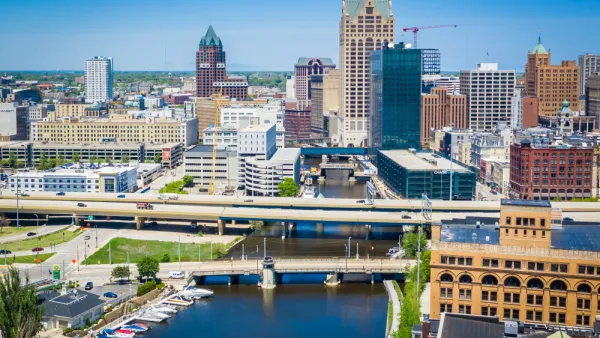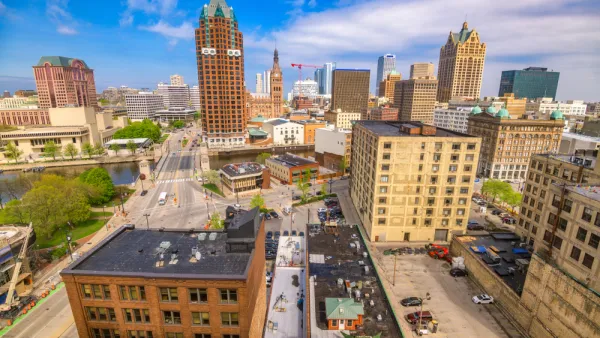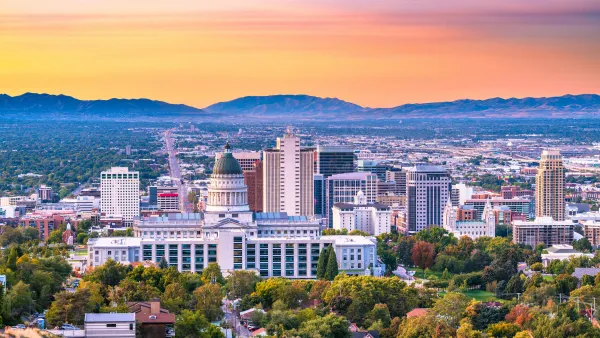The Arizona Republic spent the week fêting the "rebirth" of Downtown Phoenix, covering the evolution of the urban core of this sprawling metropolis from several angles.

"More construction cranes now dot downtown Phoenix's skyline than ever," according to an article by Catherine Regor, Jessica Boehm, and Rachel Leingang. "The area's population is surging to record levels, as is the number of employers bringing new jobs to the core of the nation's fifth-largest city."
According to the article, the Downtown Phoenix of 2018 would be unrecognizable compared to the Downtown Phoenix of 1988, just 30 years go.
"The area's comeback started when the Phoenix Suns and the Arizona Diamondbacks made downtown Phoenix their home. Then Valley leaders and voters decided to back bonds that created a bigger convention center, a major hotel and a partnership for Arizona State University to grow rapidly in the area," according to the article.
A second article, by Jessica Boehm and Rachel Leingang, digs into more specificity about how Downtown Phoenix achieved this transformation—namely through tax payer funded initiatives. "Phoenix has pumped more than $3 billion of taxpayer money into the revitalization of downtown over the past 30 years," according to the article. "The sports arenas that bring people to the city center, the transit system that connects downtown to the East Valley, the university campus that serves about 12,000 students and even some of the office buildings and apartment complexes are all due to significant public investment."
Finally, a third article takes a look forward with the latest example of catalytic project lining up to join the downtown scene. Specifically, Arizona State University is planning to expand into Downtown Phoenix with a dorm, lab space, and a central cooling plant. "ASU now has about 12,000 students in downtown Phoenix. The school probably needs two more dorms and another classroom building to accommodate growth," according to school officials cited in the article, written by Rachel Leingang.
FULL STORY: Downtown Phoenix's rebirth has been decades in the making. Here's how they did it

Analysis: Cybertruck Fatality Rate Far Exceeds That of Ford Pinto
The Tesla Cybertruck was recalled seven times last year.

National Parks Layoffs Will Cause Communities to Lose Billions
Thousands of essential park workers were laid off this week, just before the busy spring break season.

Retro-silient?: America’s First “Eco-burb,” The Woodlands Turns 50
A master-planned community north of Houston offers lessons on green infrastructure and resilient design, but falls short of its founder’s lofty affordability and walkability goals.

Test News Post 1
This is a summary

Analysis: Cybertruck Fatality Rate Far Exceeds That of Ford Pinto
The Tesla Cybertruck was recalled seven times last year.

Test News Headline 46
Test for the image on the front page.
Urban Design for Planners 1: Software Tools
This six-course series explores essential urban design concepts using open source software and equips planners with the tools they need to participate fully in the urban design process.
Planning for Universal Design
Learn the tools for implementing Universal Design in planning regulations.
EMC Planning Group, Inc.
Planetizen
Planetizen
Mpact (formerly Rail~Volution)
Great Falls Development Authority, Inc.
HUDs Office of Policy Development and Research
NYU Wagner Graduate School of Public Service




























